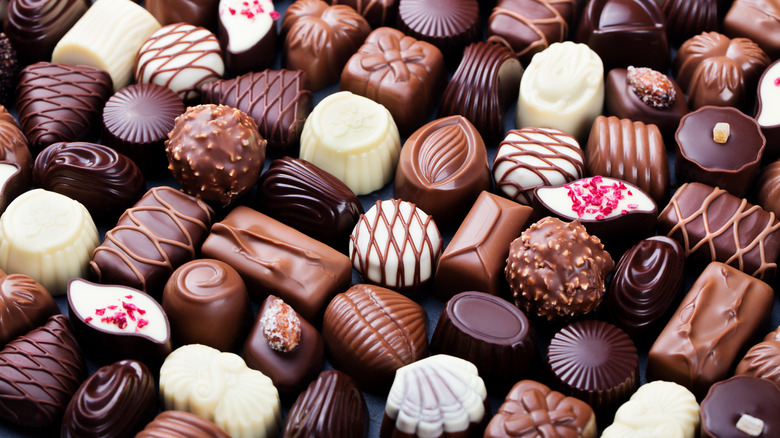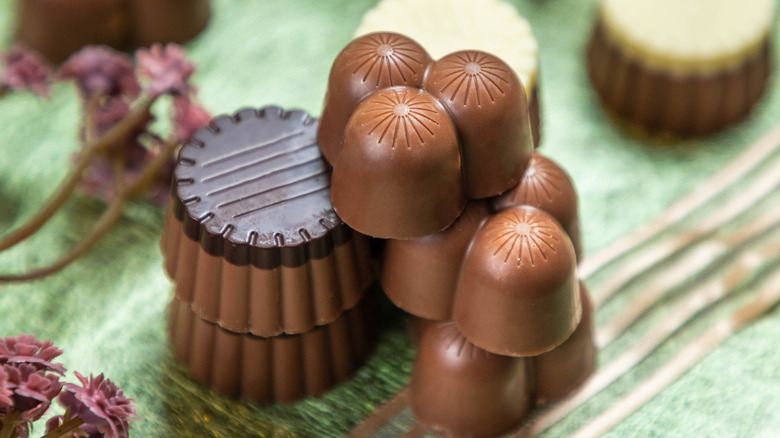A Chocolate Bar's Shape Somehow Affects How It Tastes
When Cadbury decided to change the shape of its classic square Dairy Milk chocolate bars in the early 2010s, its main concern was that the public wouldn't be so thrilled about spending the same amount of money for bars that weighed four grams less than the original version. Per the Daily Mail, the owner of Kennedy's Confection magazine Angus Kenndey had predicted as much, but Cadbury soon realized it had a bigger fish to fry. People thought the new Dairy Milk was way too sweet.
The general consensus was that the curvy Dairy Milk bars didn't hold a candle to the chocolatey squares because they didn't taste right, and per the Daily Mail, some even called it a "cultural vandalism" of the beloved chocolate. Kraft's acquisition of Cadbury didn't help, either. "[They're] probably using corn syrup as a sweetener, much cheaper," one reader wrote.
But the recipe hadn't changed at all. A Kraft spokesperson assured only the shape was altered to improve the texture, but people weren't buying it. In any case, all arguments were valid since the chocolate did taste sweeter although the recipe was the same. It was the shape that changed consumers' perceptions.
How we taste foods is actually a complex sensory process. In the case of chocolate, research published by the journal Food and Science Technology suggests that its shape influences its taste. We tend to associate rounder shapes with sweetness. Rounder chocolates also impart more flavor due to a high melt rate.
Some shapes taste better than others
Depending on the melt rate and smoothness, researchers found that some shapes are better suited to be used for chocolates than others. Round and rectangular shapes were found to be ideal chocolate shapes since they have a high melt rate and delivered a perception of a smooth taste. Other shapes like the wing and the sail had "high cocoa, high caramel notes, and high aftertaste," but they weren't deemed as smooth as rectangles and round shapes. Melt rates can be predicted according to the compactness of shapes.
Interestingly, shape psychology extends beyond food. Shapes influence people's behavior by evoking unique emotions. For instance, curved objects are often associated with pleasant feelings whereas sharp, angular shapes are associated with danger and negative emotions. Research published in the National Library of Medicine explored how people with round faces are associated with sweet foods. And there are even some people who can taste shapes due to a neurological condition called synesthesia.
We wonder if Cadbury could've avoided the backlash over its curvy chocolate bars had it reduced the amount of added sugars. Speaking of sugar, did you know that you can make food taste sweeter by simply serving it on a round plate? Apparently, people find food sweeter when they see round shapes before tasting something. Per Psychology Today, a group of researchers served cheesecakes to participants and found that the same cheesecake served on round white plates was reported to be 20% sweeter than the ones served on square white plates.

